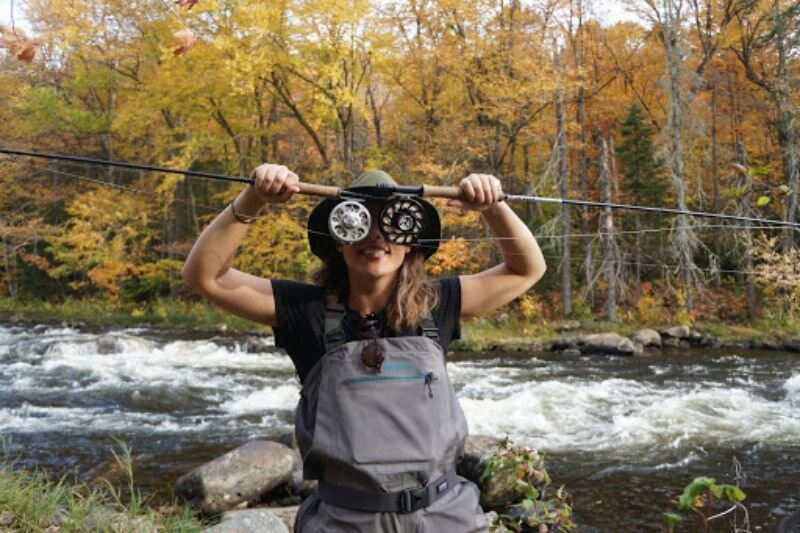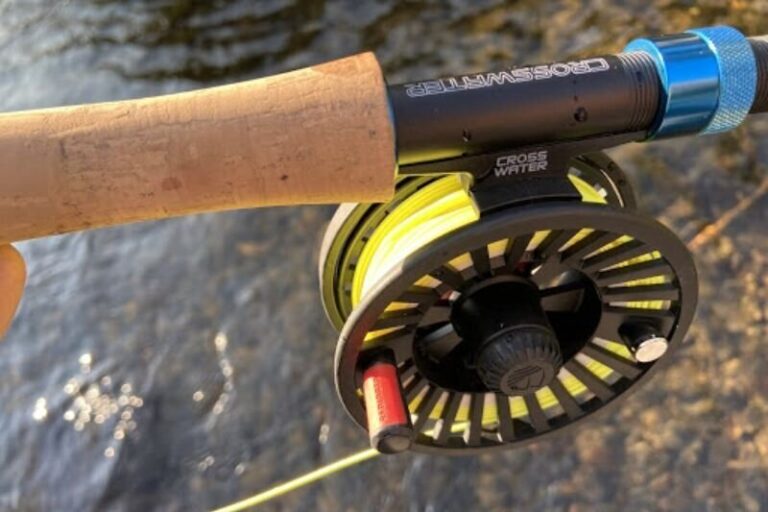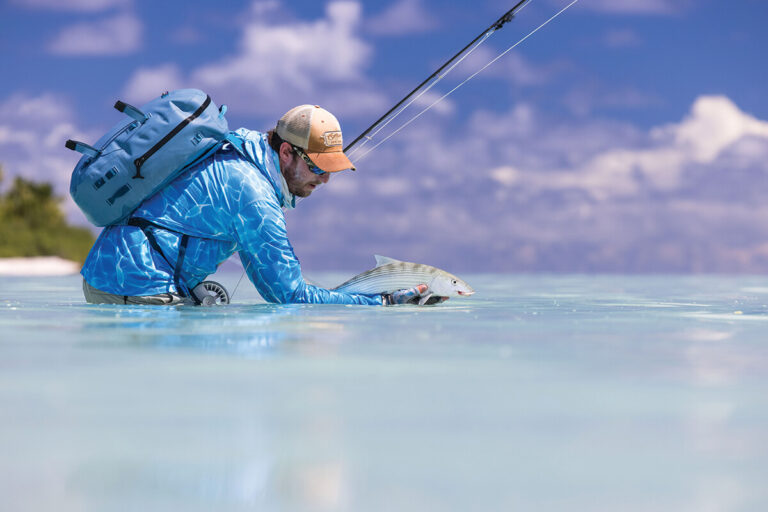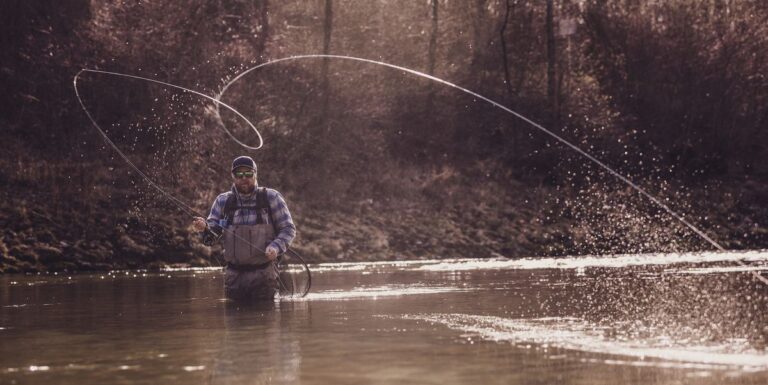To select the appropriate fly fishing rod length and weight, consider the type of fishing you plan to do and the size of the fish you are targeting. A longer rod provides greater casting distance and control, while a shorter rod offers maneuverability in tight spaces.
The weight of the rod should match the line weight you intend to use, ensuring optimal performance and balance. Carefully evaluate your fishing needs and choose a rod that fits those requirements for an enjoyable and successful fishing experience.

Credit: www.treelinereview.com
Understanding The Importance Of Fly Fishing Rod Length And Weight
When it comes to selecting the appropriate fly fishing rod, the length and weight are crucial factors to consider. Understanding how these two elements affect your fishing experience is essential for maximizing your performance on the water. Let’s dive into the key points you need to know:
Factors To Consider When Choosing The Perfect Fly Fishing Rod
- Targeted fish species: Different fish species require different rod lengths and weights to handle their size and fighting strength effectively.
- Fishing location: The environment you’ll be fishing in, whether it’s a river, lake, or saltwater, plays a role in determining the ideal rod length and weight.
- Fishing technique: The specific fishing technique you prefer, like dry fly fishing or nymphing, may require a specific rod length and weight to perform the technique optimally.
- Personal preference: Your own comfort and casting style also play a role in determining the best rod length and weight for you.
The Role Of Rod Length And Weight In Fly Fishing
- Rod length: The length of a fly fishing rod determines its leverage, casting distance, and control. Longer rods provide greater distance and control but may sacrifice maneuverability in tight spaces.
- Rod weight: The weight of a fly fishing rod determines its power and ability to handle different fish species. Heavier rods can handle larger fish, but lighter rods are more delicate and sensitive to small fish bites.
How Rod Length And Weight Affect Casting Distance And Accuracy
- Casting distance: Longer rods generate higher line speeds and, therefore, allow for longer casting distances. However, shorter rods offer greater accuracy for precision casting in tight spots.
- Casting accuracy: Lighter rods are more sensitive and allow for better accuracy, especially when delicately presenting small, lightweight flies. Heavier rods provide more power for casting larger flies or when casting against wind resistance.
Finding The Right Balance Between Rod Length And Weight For Different Fishing Conditions
- Trout fishing: For trout fishing in rivers and streams, a 9-foot rod with a weight between 4 to 6 is a versatile choice that offers good control, accuracy, and distance.
- Saltwater fishing: In saltwater environments, where you may target larger fish, a 9 to 10-foot rod with a weight between 8 to 12 is recommended for increased power and handling.
- Small stream fishing: In smaller streams or creeks, where casting distance is less critical, shorter rods between 7 to 8.5 feet with lighter weights (2 to 4) provide better maneuverability.
The Impact Of Rod Length And Weight On Fighting And Landing Fish
- Fighting fish: Longer rods provide greater leverage when fighting fish, putting less strain on you and allowing for more control over the fish’s movements.
- Landing fish: Lighter rods offer more sensitivity and finesse when playing a fish, reducing the risk of the line breaking or the fish escaping due to excessive force.
Remember, finding the right balance between rod length and weight is essential for a successful and enjoyable fly fishing experience. Consider the fish species, fishing location, technique, and personal preference to determine the perfect rod that suits your needs. Happy fishing!
Tips For Selecting The Ideal Fly Fishing Rod Length
When it comes to fly fishing, selecting the appropriate rod length is crucial for a successful and enjoyable fishing experience. The length of your fly fishing rod can have a significant impact on your casting ability, line control, and overall performance.
To help you make the right choice, here are some useful tips to consider:
Assessing Your Fishing Style And Environment
- Take into account your preferred fishing style and the type of environment you commonly fish in. Are you more inclined towards casting in open areas or tight spaces, such as small streams?
- Evaluate whether you prefer casting short, accurate casts or long distances.
- Consider the types of water bodies you frequent – lakes, rivers, or streams – as they can influence your rod length preference.
Factors To Consider When Determining Rod Length
- The length of the casting stroke: Shorter casting strokes are better suited to shorter rods, while longer rods require longer casting strokes.
- Comfort: Ensure the rod length feels comfortable in your hands, allowing for smooth and effortless casting motions.
- Experience level: Beginners may find it easier to handle shorter rods, while experienced anglers might appreciate the additional reach longer rods provide.
Types Of Water Bodies And Fishing Methods
- Stream fishing: Shorter rods are often favored for stream fishing, as they offer greater maneuverability in tight spaces and allow for precision casting.
- Lake and pond fishing: Longer rods are usually preferred for lake and pond fishing, as they allow for longer casts and better line control.
- Saltwater fishing: Longer rods are commonly used in saltwater environments to handle bigger fish species and cope with windy conditions.
Targeted Fish Species And Size
- Smaller fish: Shorter rods are ideal for targeting smaller fish species, providing the necessary sensitivity for delicate presentations.
- Larger fish: Longer rods provide the power and leverage required to handle larger fish and make longer, stronger casts.
Casting Distance Requirements
- If long casting distances are essential for your fishing style, consider opting for a longer rod to maximize your reach.
- Shorter rods are sufficient for those who prefer close-quarters fishing or casting shorter distances.
How Different Fishing Scenarios Influence Rod Length Selection
- Tight spaces: Opt for shorter rods when fishing in areas with limited casting room, such as overgrown streams or dense vegetation.
- Wide-open areas: Longer rods are suitable for casting across large bodies of water, providing the necessary line control and reach.
Recommendations For Specific Fishing Situations
- Small streams: Choose a shorter rod around 7 to 8 feet in length to navigate tight spaces and make accurate casts in smaller streams.
- Lakes and rivers: Consider a medium-length rod between 9 and 10 feet to achieve both distance and accuracy in open-water scenarios.
- Saltwater fishing: Opt for a longer rod ranging from 9 to 11 feet to handle challenging saltwater conditions and target larger fish.
Understanding The Advantages And Disadvantages Of Short, Medium, And Long Fly Fishing Rods
Short Fly Fishing Rods:
Benefits:
- Greater maneuverability in tight spaces.
- Enhanced accuracy for close-quarters casting.
- Easier to handle, especially for beginners.
Limitations:
- Limited distance for long casts.
- Reduced line control compared to longer rods.
Suitable fishing scenarios for short rods:
- Small streams with restricted casting room.
- Overgrown areas with dense vegetation.
Tips for maximizing performance with a short fly fishing rod:
- Master the art of accurate short-range casting.
- Focus on developing your technique to optimize accuracy and line control.
Medium Fly Fishing Rods:
Advantages:
- Versatile for various fishing scenarios.
- Balanced combination of accuracy and distance.
- Suitable for anglers of different skill levels.
Drawbacks:
- Not specialized for specific fishing scenarios.
- May not provide maximum casting distance or control compared to longer rods.
Ideal fishing situations for medium rods:
- Lakes, ponds, and rivers with medium-sized fish.
- Balanced approach to casting both short and medium distances.
Techniques for optimizing medium-length rod performance:
- Practice casting techniques that emphasize accuracy and distance in a balanced manner.
- Focus on developing a smooth casting stroke to achieve consistent results.
Long Fly Fishing Rods:
The benefits and challenges of longer rods:
- Increased casting distance potential.
- Enhanced line control in open environments.
- Challenging to handle in tight spaces or dense vegetation.
- Required for certain fishing scenarios, such as saltwater fishing.
Fishing scenarios where long rods excel:
- Large lakes, rivers, and saltwater environments.
- Pursuing larger fish species that require extra reach and power.
Tips for handling and casting with long fly fishing rods:
- Master long-distance casting techniques to take full advantage of the rod’s potential.
- Pay attention to rod balance and weight to maintain control during extended casting sessions.
By carefully assessing your fishing style, environment, casting preferences, and target fish species, you can select the ideal fly fishing rod length that suits your needs. Whether you opt for a short, medium, or long rod, understanding the advantages, limitations, and appropriate fishing scenarios for each length will greatly enhance your fly fishing experience.
Happy angling!
Factors To Consider When Determining The Ideal Fly Fishing Rod Weight
Understanding The Concept Of Rod Weight In Fly Fishing
When it comes to selecting the right fly fishing rod, one crucial factor to consider is the rod weight. The weight of a fly fishing rod determines its overall strength and flexibility, which directly affects casting distance, line control, and fish-fighting ability.
Here are some key points to help you understand the concept of rod weight in fly fishing:
- Rod weight refers to the amount of physical weight required to bend the rod into a specific curve.
- The weight of a fly fishing rod is typically indicated by a number ranging from 1 to 12, with 1 being the lightest and 12 being the heaviest.
- Lighter rods are generally more delicate and offer a subtle presentation, while heavier rods provide the necessary power for casting larger flies and battling stronger fish.
- Rod weight is crucial for achieving an optimal balance between the rod, fly line, and the angler’s casting ability.
The Relationship Between Rod Weight And Fly Line Weight
In fly fishing, the weight of the fly line is directly related to the rod weight. The two components must be compatible for efficient casting and line control. Consider the following points when determining the appropriate rod weight for your fly line:
- Fly line weight corresponds to the weight of the first 30 feet of the line (excluding the backing).
- The weight of the fly line should generally match the rod weight to ensure smooth casting and accurate presentations.
- Using an over-weighted or under-weighted fly line can affect casting performance and decrease line control.
- It is essential to consult the rod manufacturer’s recommendations or seek expert advice to ensure a proper match between rod and fly line weight.
How Rod Weight Affects Casting And Line Control
The weight of the fly fishing rod significantly influences casting distance and line control. Take note of the following considerations when evaluating the impact of rod weight on your casting abilities:
- Lighter rods require more casting skill and finesse to generate distance and accuracy. They are ideal for delicate presentations and smaller fish.
- Heavier rods offer greater casting power and are suited for larger flies, windy conditions, or when casting against heavy cover.
- Rod weight affects the flex of the rod, which contributes to its casting rhythm and overall performance.
- A properly weighted rod enhances line control and allows for precise manipulation of the fly during presentation, mending, and retrieving.
Selecting The Appropriate Rod Weight For Different Fishing Scenarios
Choosing the right rod weight depends on various factors, including your fishing goals, target species, and the specific fishing scenarios you’ll encounter. Consider the following points when determining the appropriate rod weight for your fishing needs:
- Lighter rod weights (1-4) are suitable for small streams, delicate presentations, and ultra-light fly fishing.
- Medium rod weights (5-7) offer versatility and are ideal for general trout fishing, small to medium-sized rivers, and moderate-sized fish.
- Heavier rod weights (8-12) are designed for targeting larger fish species, saltwater fishing, and handling strong winds or heavy cover situations.
- It is crucial to evaluate different fishing scenarios and prioritize the characteristics most important for your fishing preferences.
Balancing Rod Weight With Casting Skill And Physical Ability
Finding the right balance between rod weight, casting skill, and physical ability is key to an enjoyable fly fishing experience. Keep these points in mind to ensure optimal comfort and performance on the water:
- Lighter rods are generally easier to cast for anglers with limited upper body strength or physical mobility.
- Heavier rods may require more effort to cast but offer increased power and control for experienced anglers.
- Consider your casting style, casting arm strength, and any physical limitations when choosing a rod weight.
- It is essential to find a rod that allows you to cast comfortably and effectively without straining your body.
Considering Your Fishing Goals And Target Species
Your fishing goals and target species also play a significant role in selecting the appropriate rod weight. Consider the following points when determining the right rod weight for your specific fishing objectives:
- If you primarily pursue small trout in small streams, a lighter rod weight (2-4) will provide the delicate presentation required for those scenarios.
- Anglers targeting larger fish species such as salmon, bass, or saltwater species should consider a heavier rod weight (6-12) to handle the extra power and fight.
- It’s essential to match the rod weight to the typical size and behavior of the fish you intend to catch to maximize your chances of success.
Different Rod Weights For Various Fish Species And Fishing Techniques
Different fish species and fishing techniques often require specific rod weights to achieve optimal performance. Consider the following guidelines when selecting a rod weight based on the intended fish species and fishing techniques:
- Lighter rod weights (1-4) are well-suited for pursuing small trout, panfish, and delicate dry fly presentations.
- Medium rod weights (5-7) provide versatility for targeting trout, bass, and various freshwater species using both dry flies and nymphs.
- Heavier rod weights (8-12) are necessary for saltwater fishing, targeting large salmon and steelhead, or using heavy streamers and saltwater flies.
- Understanding the specific demands of your target fish species and fishing techniques will help guide your rod weight selection.
Understanding The Advantages And Limitations Of Different Rod Weights
Each rod weight has its advantages and limitations, which should be considered before making a final decision. Keep the following in mind when evaluating different rod weights:
- Lighter rods (1-4) excel at delicate presentations, making them ideal for dry fly fishing and small streams. However, they may lack the power needed for longer casts or handling larger fish.
- Heavier rods (8-12) provide the necessary power for long-distance casting, fighting larger fish, and handling challenging weather conditions. However, they can be less suitable for smaller streams or situations that require finesse.
- It’s crucial to weigh the specific advantages and limitations of different rod weights against your fishing preferences and the conditions you’re likely to encounter.
Matching Rod Weight With Fishing Conditions And Environment
Fishing conditions and the environment can greatly influence the choice of rod weight. Consider these important factors when matching rod weight to your fishing conditions:
- Windy conditions require a heavier rod weight to power through gusts and enable accurate casting against the wind.
- Heavy cover environments, such as dense vegetation or structure, may necessitate a heavier rod weight to help move fish quickly out of these obstruction-prone areas.
- Evaluating the typical weather patterns, prevailing winds, and water environments of your fishing destinations will help guide your rod weight selection for optimal performance.
Trying Different Rod Weights And Seeking Expert Advice
The best way to determine the ideal rod weight for your fishing needs is by trying different rods and seeking expert advice. Keep these points in mind when experimenting with different rod weights:
- Attend gear demos and clinics offered by fly fishing shops and communities to test various rod weights and seek guidance from experts.
- Experiment with different rod weights to get a feel for their casting, handling, and fish-fighting capabilities before making a purchase.
- Seek input from experienced fly fishers and professionals who can provide valuable insights based on their own experiences and expertise.
- Gathering multiple perspectives and hands-on experience will help you make an informed decision when selecting the appropriate rod weight for your personal fly fishing pursuits.
Conclusion
Choosing the right fly fishing rod length and weight is crucial for an enjoyable and successful fishing experience. The length and weight of the rod determine the distance and accuracy of your casts, as well as your ability to handle different fly line weights.
Understanding the factors that influence rod selection, such as the fishing environment and target species, allows you to make an informed decision. Take into account the type of water you’ll be fishing in, the size and strength of the fish you’re targeting, and your own casting abilities.
By matching the rod’s length and weight to these factors, you can optimize your chances of a successful fishing trip. Remember to try out different rods before making a final decision, ensuring the rod feels comfortable and suits your fishing style.
With the right rod in hand, you’ll be ready to tackle any fishing adventure with confidence. Happy fishing!





